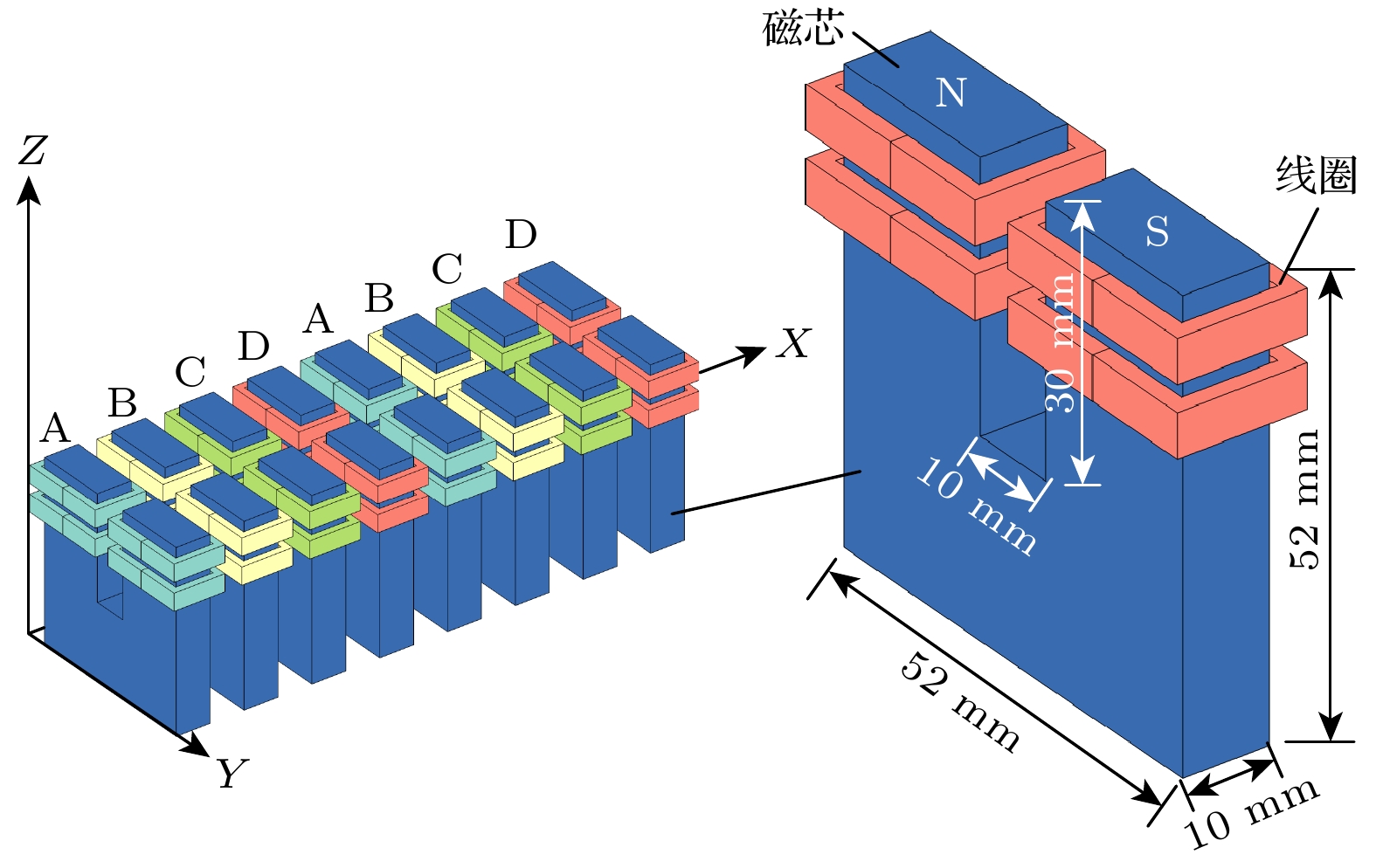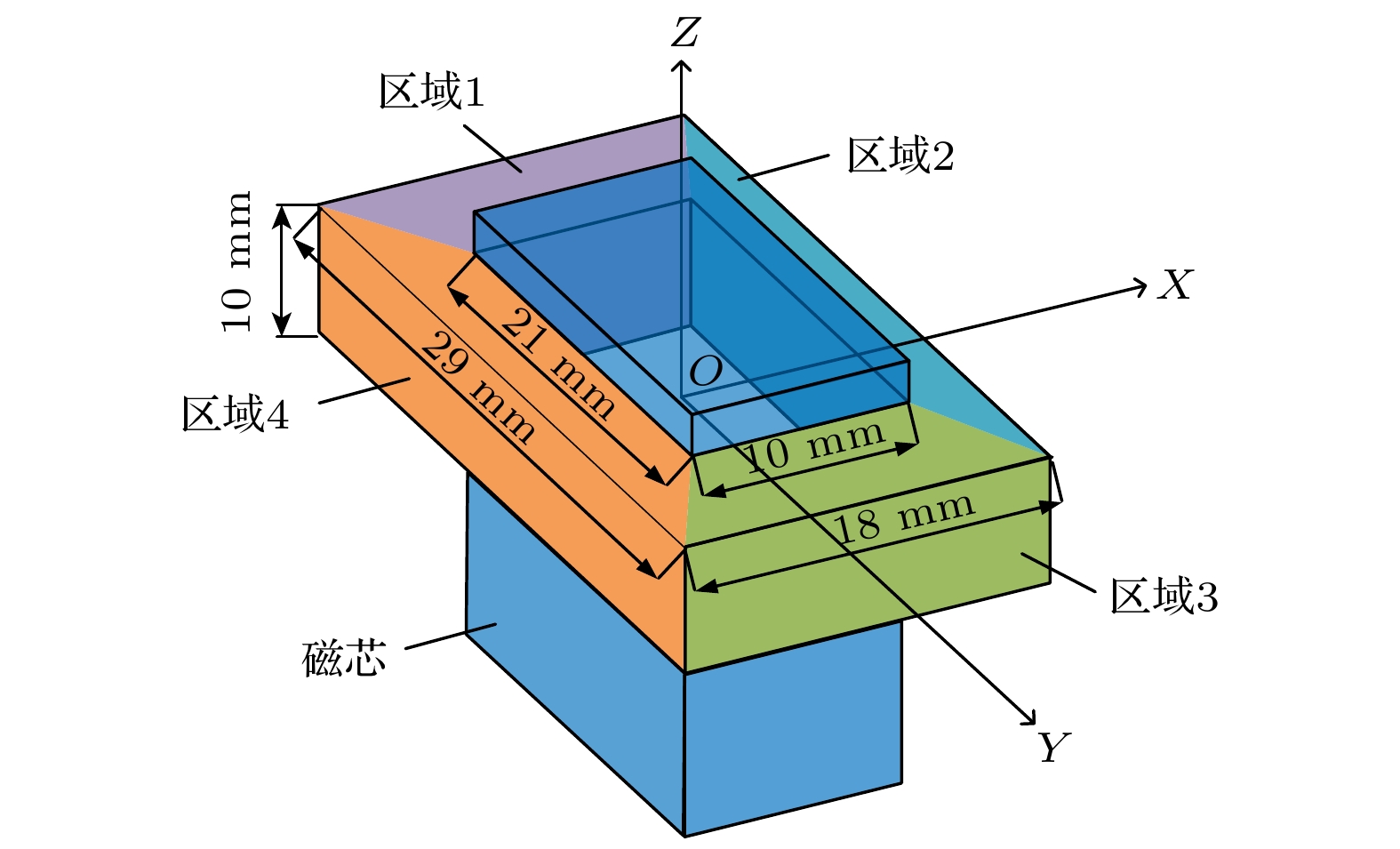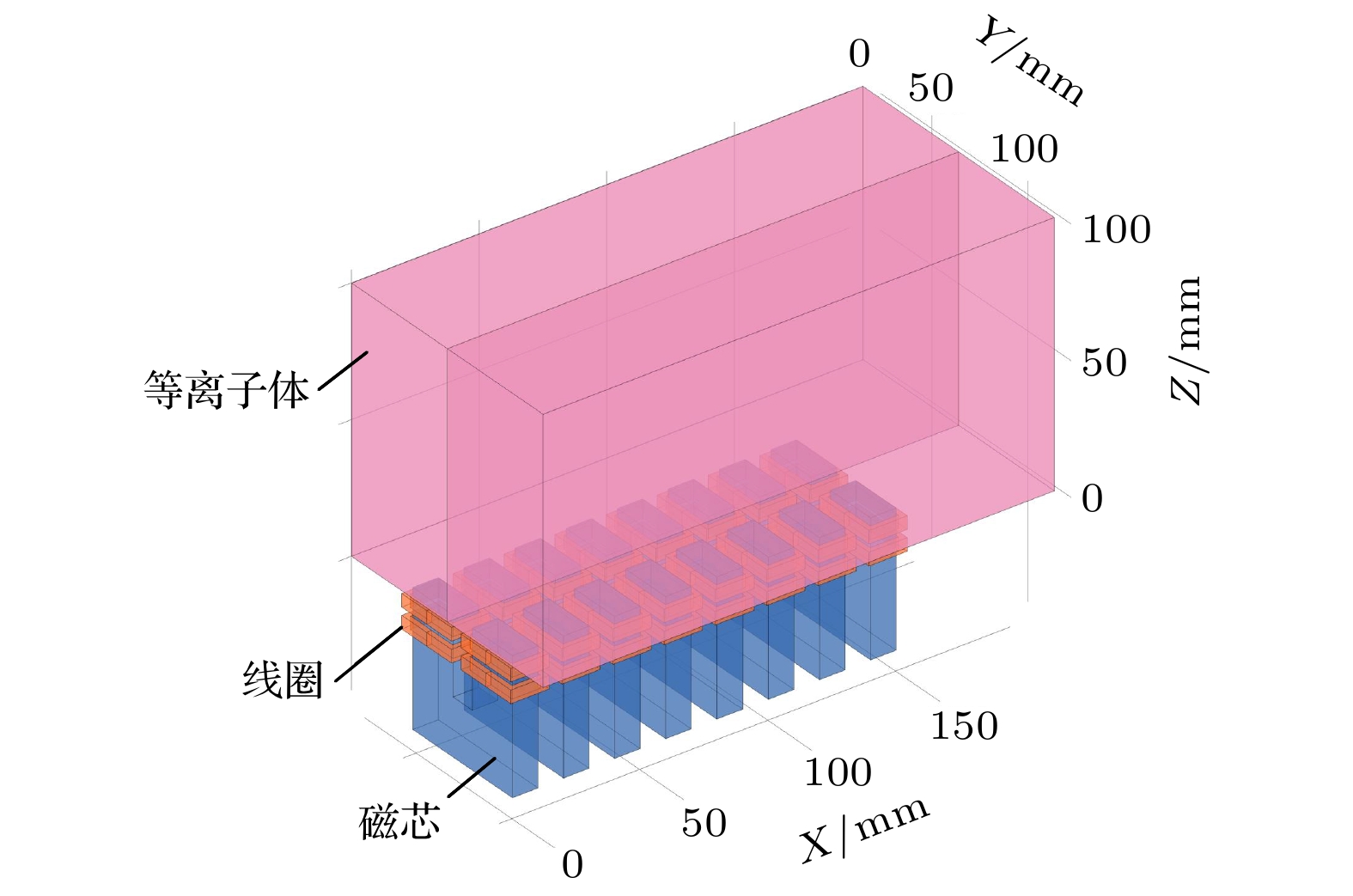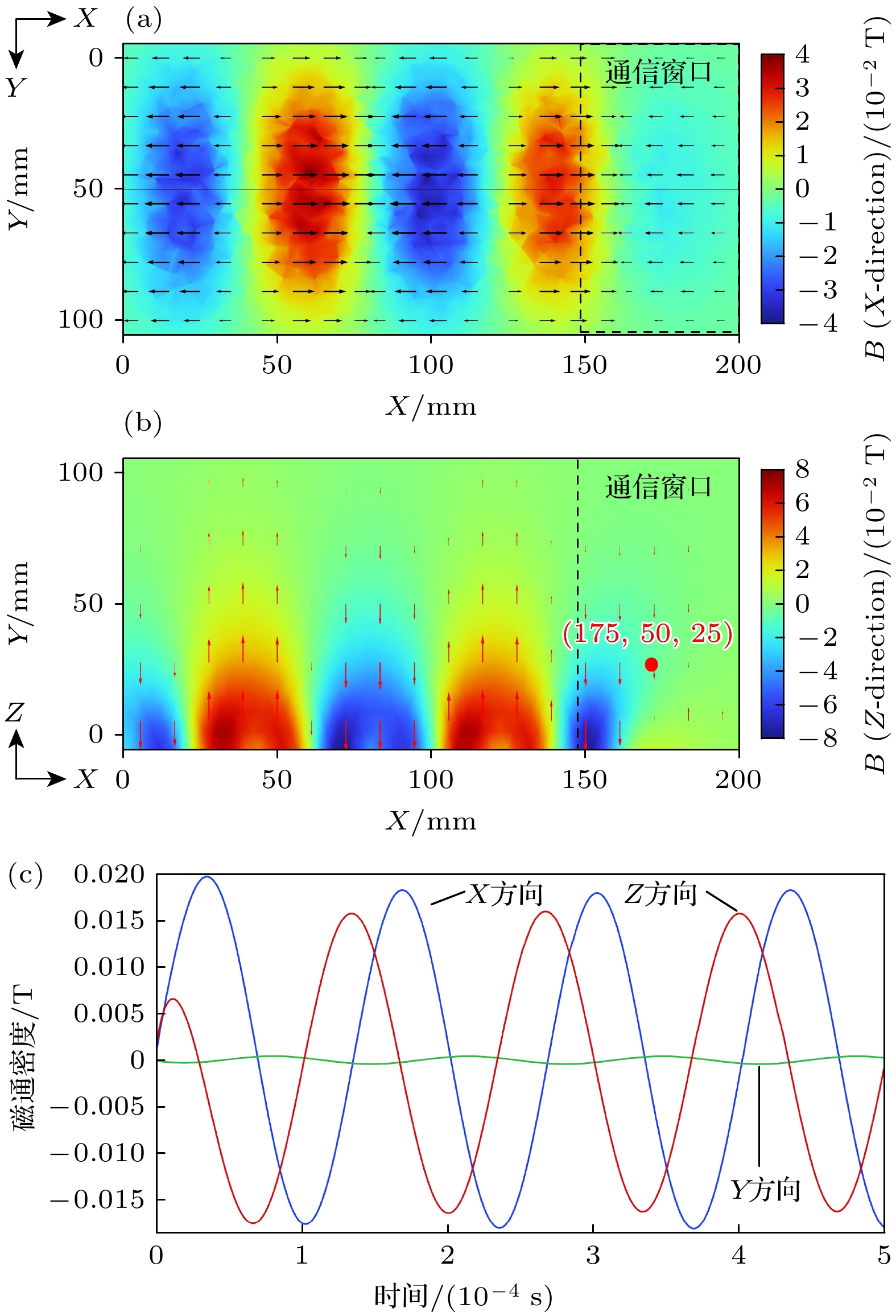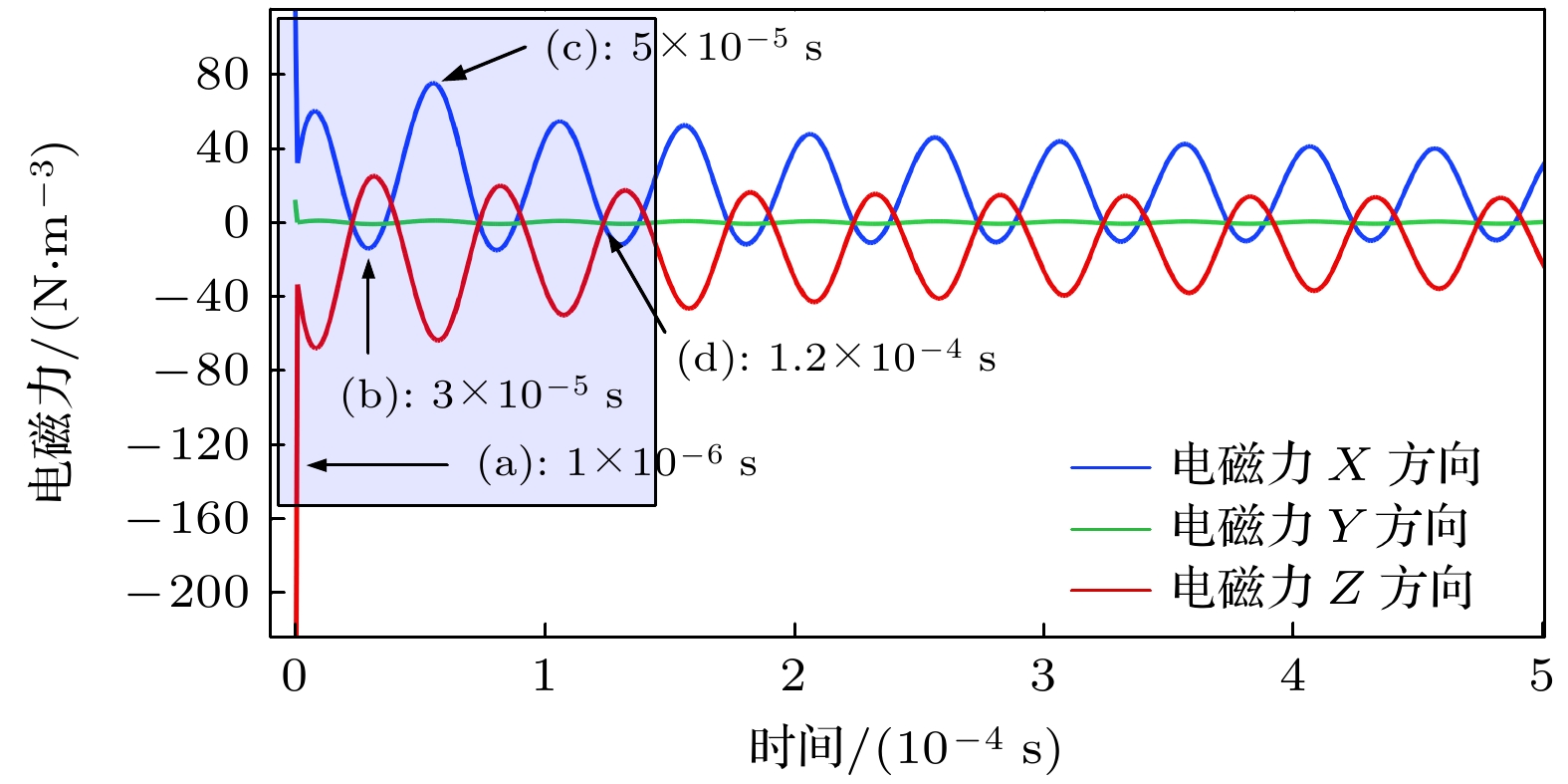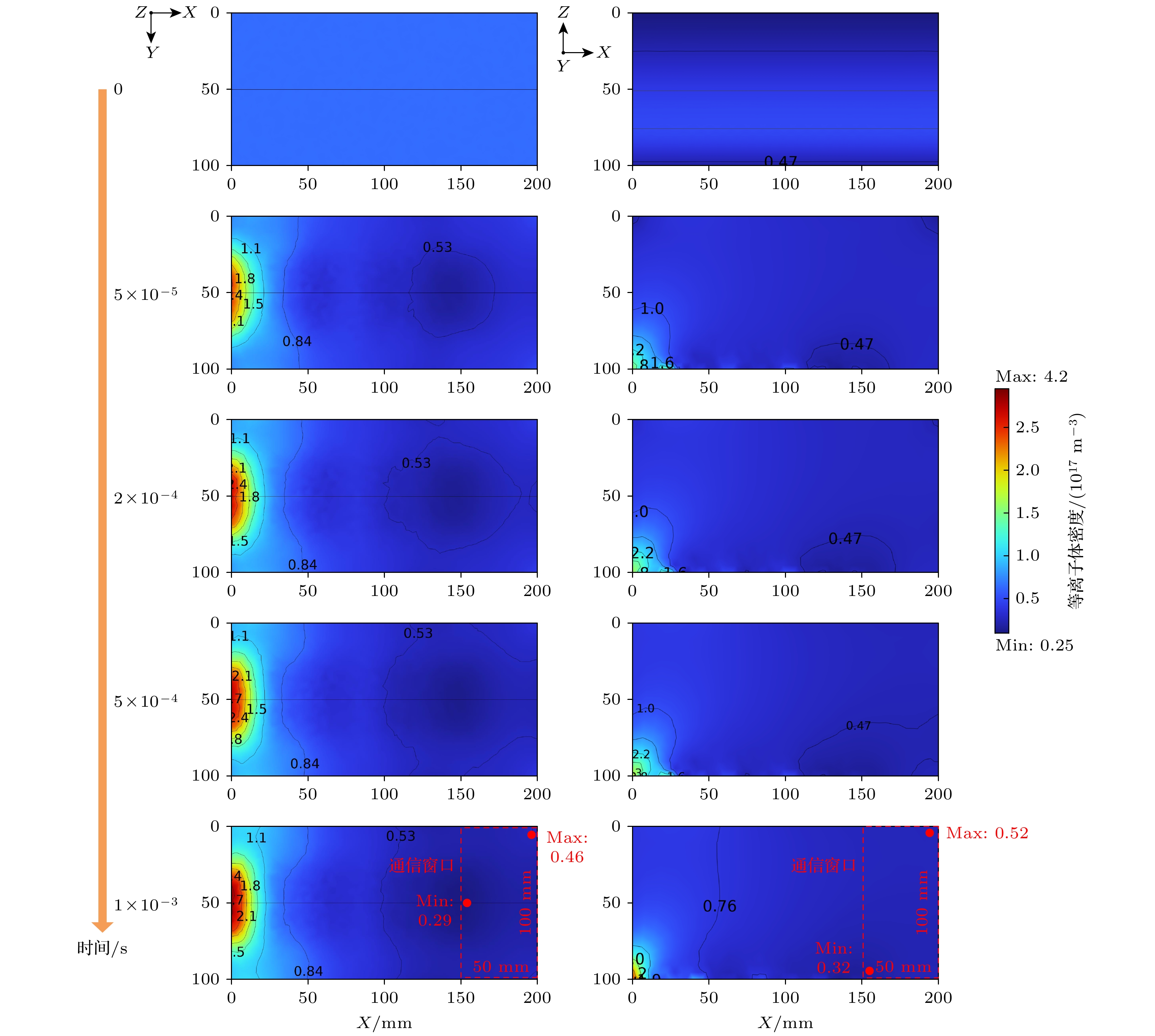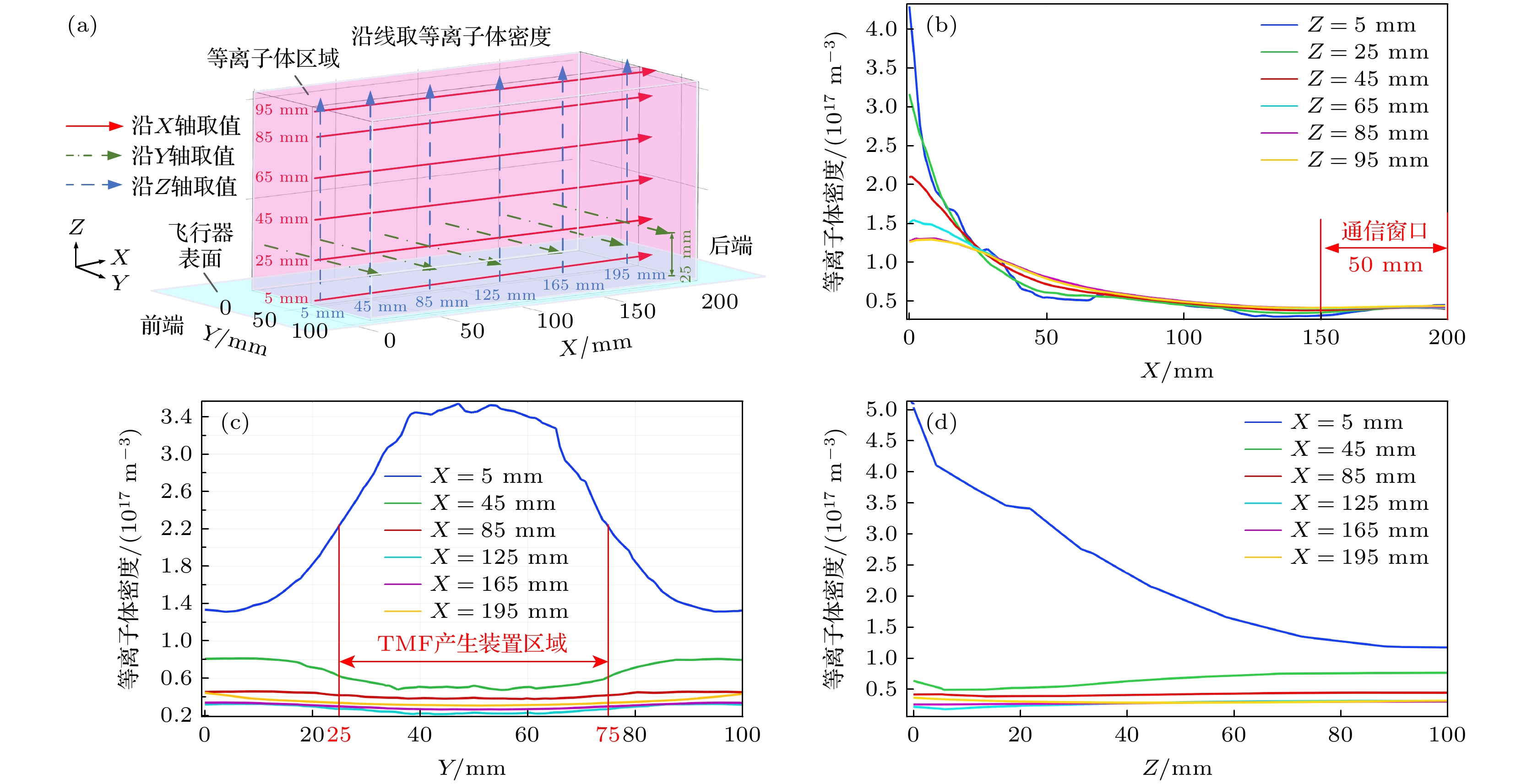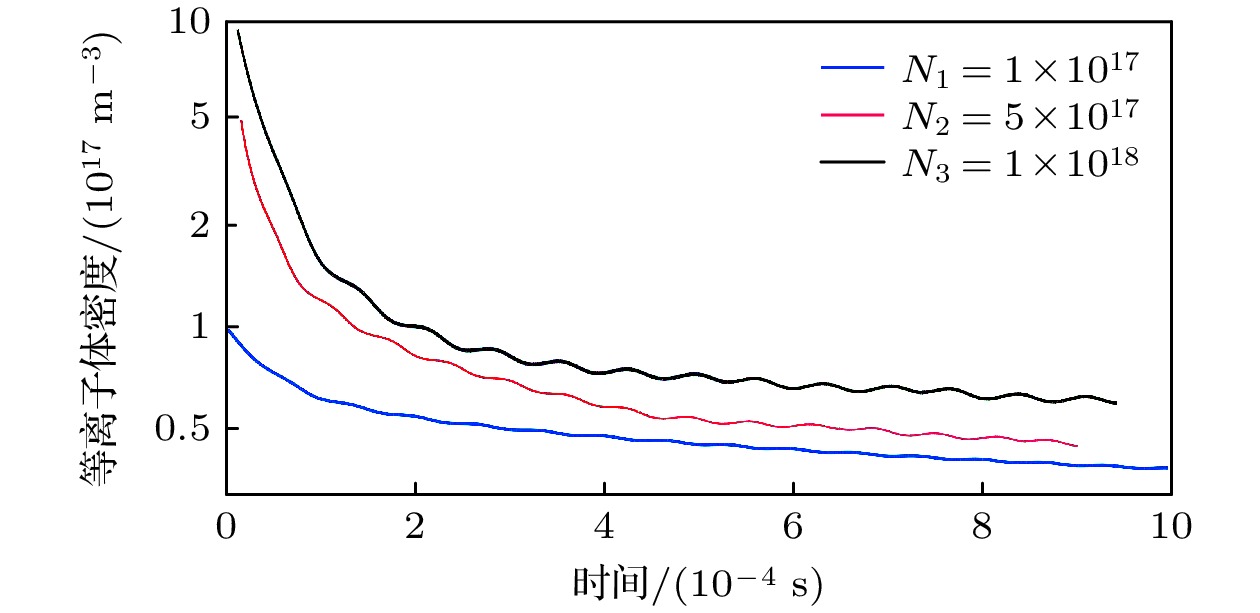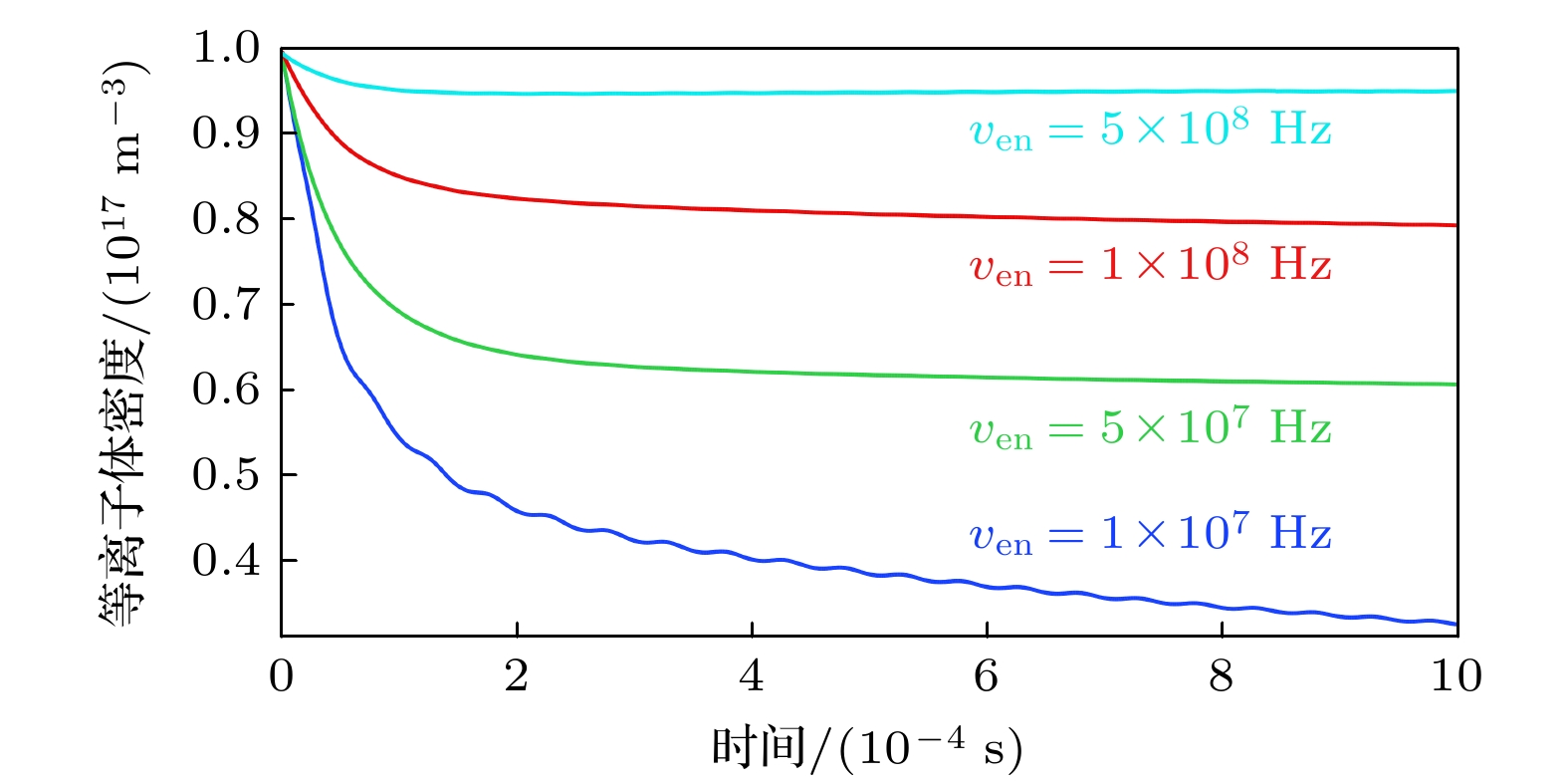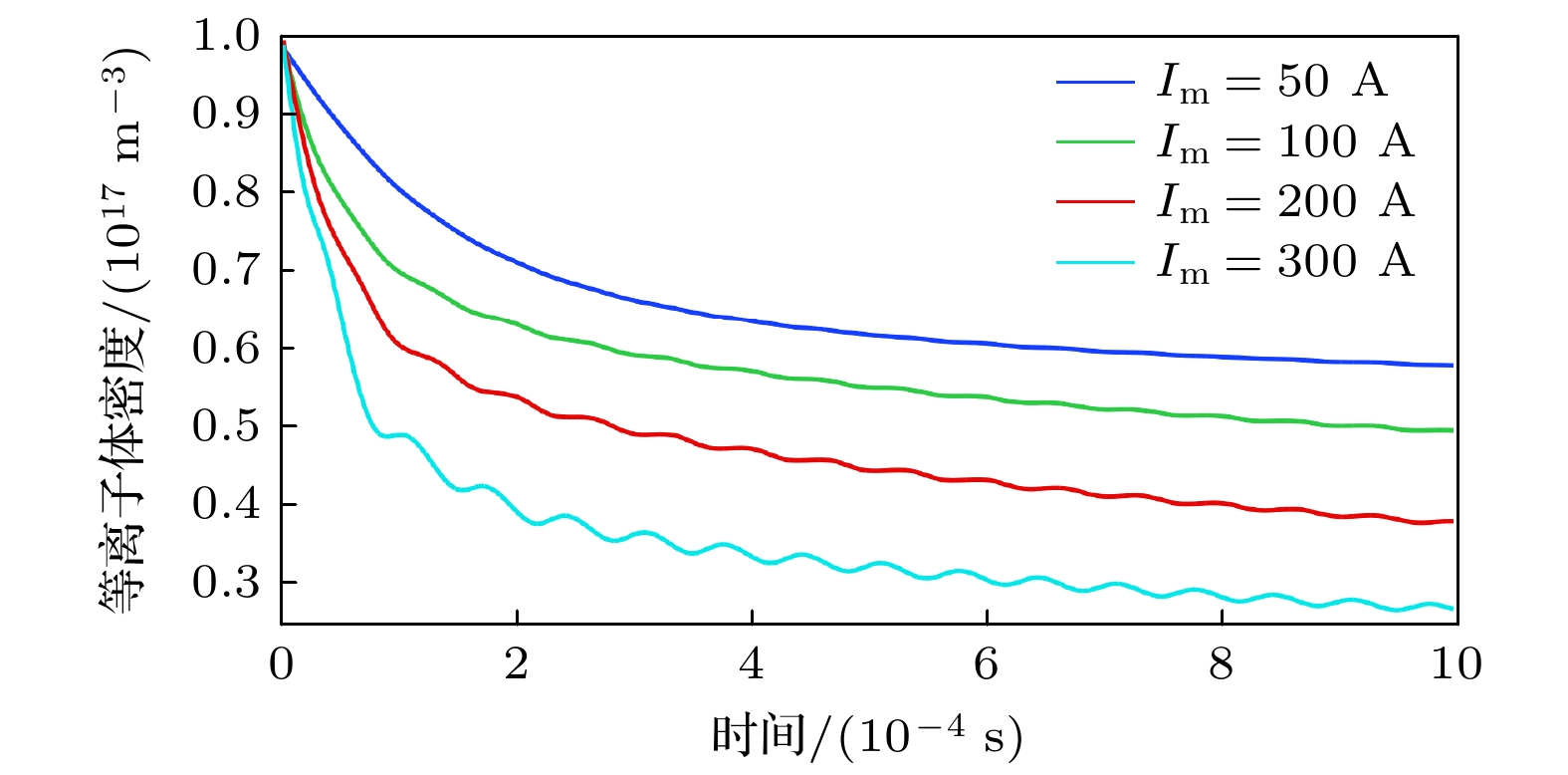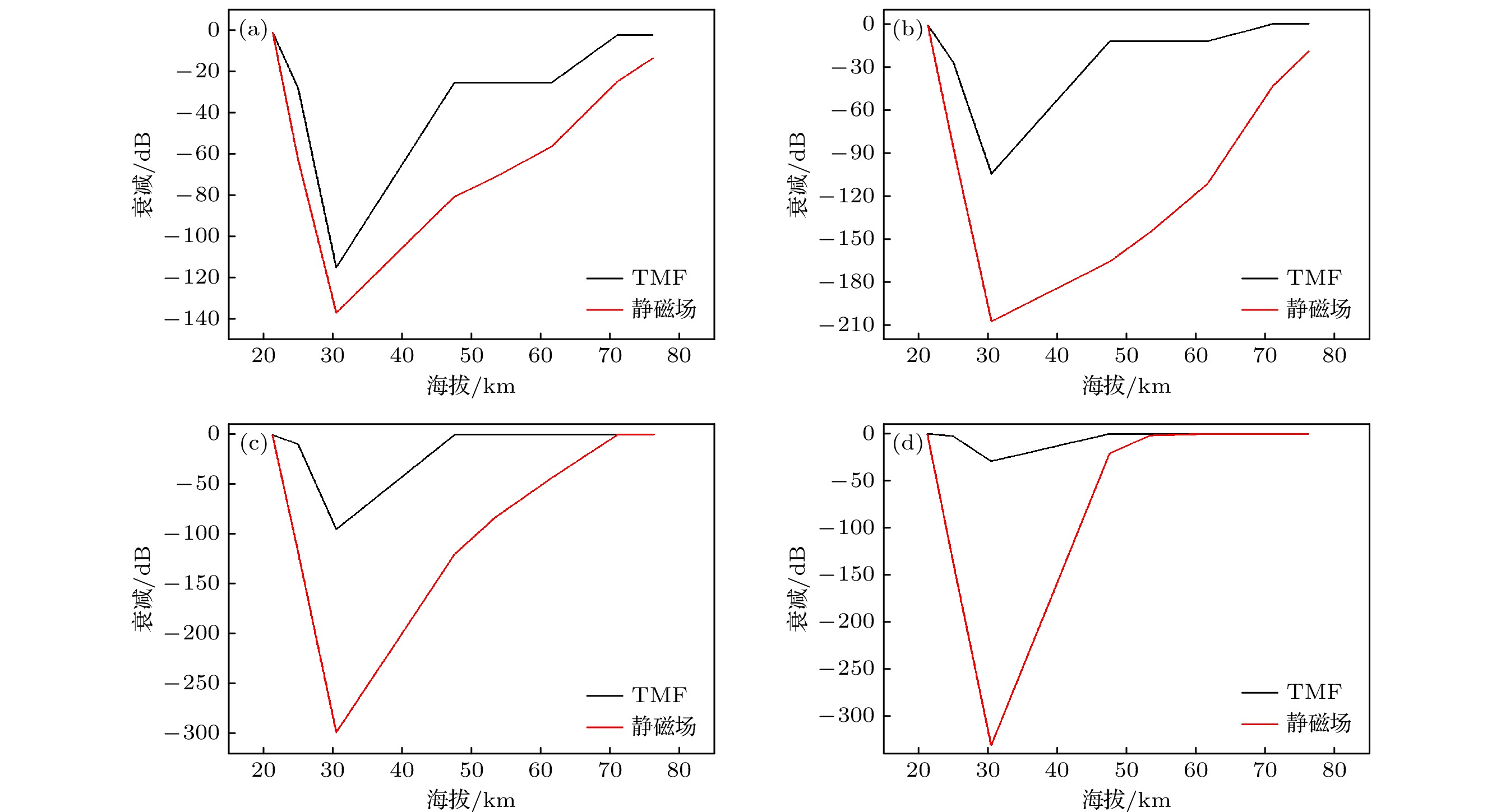-
飞行器以高超音速飞行或再入过程中, 表面会被等离子体鞘套包覆. 等离子体鞘套会阻碍电磁波传播, 造成飞行器无线电信号衰减甚至中断, 即通信黑障. 行波磁场是一种能够通过调控等离子体鞘套密度来缓解通信黑障的磁场. 本文针对一维行波磁场无法准确描述空间内等离子体密度分布的问题, 建立了三维行波磁场产生模型和三维等离子体密度分布模型. 通过研究行波磁场与等离子体相互作用的机理, 得到了空间内等离子体的密度分布. 研究结果表明, 在行波磁场的作用下, 等离子体会往飞行器前端汇聚, 从而在后端形成尺寸为50
$\times$ 100 mm的密度降低区域, 使该区域内的等离子体密度最大降低71%, 且提供持续的通信时间. 基于RAM-C飞行试验的数据, 利用所提出的模型研究了电流大小和行波速度对飞行器再入过程中电磁波衰减的影响, 同时对比了行波磁场与外加静磁场对电磁波衰减的抑制效果. 结果表明, 施加行波磁场能够使飞行器在30.48 km处的X波段以及其他高度处的L波段、S波段、C波段和X波段的电磁波衰减降低到30 dB以下. 行波磁场和静磁场的对比结果表明, 行波磁场对电磁波衰减的抑制效果明显优于静磁场.When the vehicle travels at a hypersonic speed or during re-entry, the surface is covered by a plasma sheath. Plasma sheath can impede electromagnetic wave propagation, causing vehicle radio signals to be attenuated or even interrupted, which is communication blackout. The traveling magnetic field is a kind of magnetic field that can mitigate the communication blackout by adjusting the density of the plasma sheath. In this work, a three-dimensional traveling magnetic field generation model and a three-dimensional plasma density distribution model are established for the problem that the one-dimensional traveling magnetic field cannot accurately describe the plasma density distribution in space. The mechanism of the interaction between the traveling magnetic field and the plasma is investigated to obtain the plasma density distribution in space. The results show that applying a traveling magnetic field can generate a density reduction region of 50$\times$ 100 mm at the rear of the vehicle, resulting in a maximum decrease of 71% in plasma density in the region and providing continuous communication time. Meanwhile, the effects of initial density, collision frequency, traveling velocity and current magnitude on the plasma density distribution are investigated. The results show that with the increase of the initial density, the ability to regulate the plasma density is improved. However, due to the large density base, the adjusted plasma density is still higher than the plasma density of the low-density case. The increase of the collision frequency can significantly reduce the regulation effect. Increasing the traveling velocity and current can enhance the density-adjusting effect. However, further increasing the traveling velocity to above 800 m/s does not yield a more significant adjustment effect. Based on the data from the RAM-C flight test, the proposed model is used to study the effects of current magnitude and traveling velocity on the electromagnetic wave attenuation during aircraft reentry. The mitigation effect of the traveling magnetic field on electromagnetic wave attenuation is also compared with the effect of applying a static magnetic field. The results show that the applied traveling magnetic field can reduce the electromagnetic wave attenuation of the vehicle to below 30 dB in the X-band at an altitude of 30.48km, as well as in the L-, S-, C- and X-bands at other altitudes. The comparison between traveling magnetic field and static magnetic field demonstrates that the traveling magnetic field significantly outperforms the static magnetic field in mitigating electromagnetic wave attenuation.[1] Bai B, Liu Y M, Li X P, Yao B, Shi L 2018 Phys. Plasmas 25 062101
 Google Scholar
Google Scholar
[2] Zhao Q, Xing X J, Xuan Y L, Liu S Z 2014 Plasma Sci. Technol. 16 614
 Google Scholar
Google Scholar
[3] Lemmer K M, Gallimore A D, Smith T B, Davis C N, Peterson P 2009 J. Spacecr. Rockets 46 1100
 Google Scholar
Google Scholar
[4] Kundrapu M, Loverich J, Beckwith K, Stoltz P, Shashurin A, Keidar M, Ketsdever A 2015 J. Spacecr. Rockets 52 853
 Google Scholar
Google Scholar
[5] Cheng J J, Jin K, Kou Y, Hu R F, Zheng X J 2017 J. Appl. Phys. 121 093301
 Google Scholar
Google Scholar
[6] Xiong J, Yuan K, Tang R, Mao M, Deng X 2023 Phys. Plasmas 30 090701
 Google Scholar
Google Scholar
[7] 刘祥群, 刘宇, 凌艺铭, 雷久侯, 曹金祥, 李瑾, 钟育民, 谌明, 李艳华 2022 71 145202
 Google Scholar
Google Scholar
Liu X Q, Liu Y, Ling Y M, Lei J H, Cao J X, Li J, Zhong Y M, Chen M, Li Y H 2022 Acta Phys. Sin. 71 145202
 Google Scholar
Google Scholar
[8] Yang M, Li X P, Xie K, Liu Y M 2015 Phys. Plasmas 22 022120
 Google Scholar
Google Scholar
[9] Belov I F, Borovoy V Y, Gorelov V A, Kireev A Y, Korolev A S, Stepanov E A 2001 J. Spacecr. Rockets 38 249
 Google Scholar
Google Scholar
[10] Takahashi Y, Enoki N, Takasawa H, Oshima N 2020 J. Phys. D: Appl. Phys. 53 235203
 Google Scholar
Google Scholar
[11] Miyashita T, Takasawa H, Takahashi Y, Steffens L, Gülhan A 2024 AIAA J. 62 437
 Google Scholar
Google Scholar
[12] Miyashita T, Sugihara Y, Takahashi Y, Nagata Y, Kihara, H 2024 J. Phys. D: Appl. Phys. 57 325206
 Google Scholar
Google Scholar
[13] Ouyang W C, Liu Q, Wu Z W 2023 Chin. J. Aeronaut. 36 137
[14] Zhou H, Li X P, Xie K, Liu Y M, Yu Y Y 2017 AIP Advances 7 025114
 Google Scholar
Google Scholar
[15] Keidar M, Kim M, Boyd I D 2008 J. Spacecr. Rockets 45 445
 Google Scholar
Google Scholar
[16] Kim M, Keidar M, Boyd I D 2008 IEEE Trans. Plasma Sci. 36 1198
 Google Scholar
Google Scholar
[17] Guo S S, Xie K, Xu H, Fu M X, Niu Y Y 2023 Plasma Sci. Technol. 25 065401
 Google Scholar
Google Scholar
[18] Stenzel R L, Urrutia J M 2013 J. Appl. Phys. 113 103303
 Google Scholar
Google Scholar
[19] Liu D, Li X, Liu Y, Xu J, Lei F, Chen X 2018 AIP Advances 8 085020
 Google Scholar
Google Scholar
[20] Xu J H, Li X P, Liu D L, Wang Y 2021 Plasma Sci. Technol. 23 075301
 Google Scholar
Google Scholar
[21] Han M Y, Li Z M, Zhou H, Li Z Y, Liu G H, Xu Z Y, Liu Z 2024 IEEE Trans. Plasma Sci. 52 259
 Google Scholar
Google Scholar
[22] Guo S S, Xie K, Sun B, Liu S W 2020 Plasma Sci. Technol. 22 125301
 Google Scholar
Google Scholar
[23] Soliman E A, Helaly A, Megahed A A 2007 Prog. Electromagn. Res. 67 25
 Google Scholar
Google Scholar
[24] Liu D L, Li X P, Liu Y M, Xu J H, Lei F, Chen X 2018 AIP Advances 8 085803
[25] Kim M 2009 Ph.D. Dissertation (Ann Arbor: University of Michigan
[26] Zhou H, Li X P, Xie K, Liu Y M, Yao B, Ai W 2017 AIP Advances 7 105314
 Google Scholar
Google Scholar
[27] Xu J H, Li X P, Liu D L, Xu C, Qin Y Q 2021 Phys. Plasmas 28 042509
 Google Scholar
Google Scholar
[28] Rawhouser R 1970 Overview of the AF Avionics Laboratory Reentry Electromagnetics Program Hampton, VA, October 13, 1970 p3
[29] Ouyang W C, Ding C B, Liu Q, Lu Q M, Wu Z W 2023 Results Phys. 53 106983
 Google Scholar
Google Scholar
[30] Wu X, Zhang J H, Dong G X, Shi L 2024 Chin. Phys. B 33 055201
 Google Scholar
Google Scholar
[31] 杨敏, 王佳明, 齐凯旋, 李小平, 谢楷, 张琼杰, 刘浩岩, 董鹏 2022 71 235201
 Google Scholar
Google Scholar
Yang M, Wang J M, Qi K X, Li X P, Xie K, Zhang Q J, Liu H Y, Dong P 2022 Acta Phys. Sin. 71 235201
 Google Scholar
Google Scholar
-
图 9 4个时间点的电磁力大小和方向示意图 (a) $1\times10^{-6} \;{\mathrm{s}}$; (b)$3\times10^{-5} \;{\mathrm{s}} $; (c)$5\times10^{-5} \;{\mathrm{s}} $; (d)$1.2\times10^{-4} \;{\mathrm{s}} $
Fig. 9. Schematic representation of the magnitude and direction of the electromagnetic force at four points in time: (a)$1\times10^{-6} \;{\mathrm{s}} $; (b)$3\times10^{-5} \;{\mathrm{s}} $; (c)$ 5\times10^{-5} \;{\mathrm{s}} $; (d)$1.2\times10^{-4} \;{\mathrm{s}} $
表 1 RAM-C飞行试验中不同高度下的等离子体鞘套参数
Table 1. Plasma sheath parameters at different altitudes in the RAM-C flight test
再入过程 海拔/km 气压/Pa 等离子体密度/$ {\mathrm{m}}^{-3} $ 碰撞频率/GHz 等离子体鞘套厚度/cm 阶段1 76.2 2 $ 4.02\times 10^{16} $ 0.005 14.0 71.02 17 $ 1\times 10^{17} $ 0.012 11.2 阶段2 61.57 25 $ 4.037\times 10^{17} $ 0.050 7.8 53.34 55 $ 6.86\times 10^{17} $ 0.175 7.0 47.55 288 $ 1.02\times 10^{18} $ 0.420 5.8 阶段3 30.48 1197 $ 1\times 10^{19} $ 5.710 6.8 阶段4 25.01 2094 $ 5\times 10^{18} $ 13.18 5.4 21.34 4085 $ 5.03\times 10^{16} $ 23.00 5.3 -
[1] Bai B, Liu Y M, Li X P, Yao B, Shi L 2018 Phys. Plasmas 25 062101
 Google Scholar
Google Scholar
[2] Zhao Q, Xing X J, Xuan Y L, Liu S Z 2014 Plasma Sci. Technol. 16 614
 Google Scholar
Google Scholar
[3] Lemmer K M, Gallimore A D, Smith T B, Davis C N, Peterson P 2009 J. Spacecr. Rockets 46 1100
 Google Scholar
Google Scholar
[4] Kundrapu M, Loverich J, Beckwith K, Stoltz P, Shashurin A, Keidar M, Ketsdever A 2015 J. Spacecr. Rockets 52 853
 Google Scholar
Google Scholar
[5] Cheng J J, Jin K, Kou Y, Hu R F, Zheng X J 2017 J. Appl. Phys. 121 093301
 Google Scholar
Google Scholar
[6] Xiong J, Yuan K, Tang R, Mao M, Deng X 2023 Phys. Plasmas 30 090701
 Google Scholar
Google Scholar
[7] 刘祥群, 刘宇, 凌艺铭, 雷久侯, 曹金祥, 李瑾, 钟育民, 谌明, 李艳华 2022 71 145202
 Google Scholar
Google Scholar
Liu X Q, Liu Y, Ling Y M, Lei J H, Cao J X, Li J, Zhong Y M, Chen M, Li Y H 2022 Acta Phys. Sin. 71 145202
 Google Scholar
Google Scholar
[8] Yang M, Li X P, Xie K, Liu Y M 2015 Phys. Plasmas 22 022120
 Google Scholar
Google Scholar
[9] Belov I F, Borovoy V Y, Gorelov V A, Kireev A Y, Korolev A S, Stepanov E A 2001 J. Spacecr. Rockets 38 249
 Google Scholar
Google Scholar
[10] Takahashi Y, Enoki N, Takasawa H, Oshima N 2020 J. Phys. D: Appl. Phys. 53 235203
 Google Scholar
Google Scholar
[11] Miyashita T, Takasawa H, Takahashi Y, Steffens L, Gülhan A 2024 AIAA J. 62 437
 Google Scholar
Google Scholar
[12] Miyashita T, Sugihara Y, Takahashi Y, Nagata Y, Kihara, H 2024 J. Phys. D: Appl. Phys. 57 325206
 Google Scholar
Google Scholar
[13] Ouyang W C, Liu Q, Wu Z W 2023 Chin. J. Aeronaut. 36 137
[14] Zhou H, Li X P, Xie K, Liu Y M, Yu Y Y 2017 AIP Advances 7 025114
 Google Scholar
Google Scholar
[15] Keidar M, Kim M, Boyd I D 2008 J. Spacecr. Rockets 45 445
 Google Scholar
Google Scholar
[16] Kim M, Keidar M, Boyd I D 2008 IEEE Trans. Plasma Sci. 36 1198
 Google Scholar
Google Scholar
[17] Guo S S, Xie K, Xu H, Fu M X, Niu Y Y 2023 Plasma Sci. Technol. 25 065401
 Google Scholar
Google Scholar
[18] Stenzel R L, Urrutia J M 2013 J. Appl. Phys. 113 103303
 Google Scholar
Google Scholar
[19] Liu D, Li X, Liu Y, Xu J, Lei F, Chen X 2018 AIP Advances 8 085020
 Google Scholar
Google Scholar
[20] Xu J H, Li X P, Liu D L, Wang Y 2021 Plasma Sci. Technol. 23 075301
 Google Scholar
Google Scholar
[21] Han M Y, Li Z M, Zhou H, Li Z Y, Liu G H, Xu Z Y, Liu Z 2024 IEEE Trans. Plasma Sci. 52 259
 Google Scholar
Google Scholar
[22] Guo S S, Xie K, Sun B, Liu S W 2020 Plasma Sci. Technol. 22 125301
 Google Scholar
Google Scholar
[23] Soliman E A, Helaly A, Megahed A A 2007 Prog. Electromagn. Res. 67 25
 Google Scholar
Google Scholar
[24] Liu D L, Li X P, Liu Y M, Xu J H, Lei F, Chen X 2018 AIP Advances 8 085803
[25] Kim M 2009 Ph.D. Dissertation (Ann Arbor: University of Michigan
[26] Zhou H, Li X P, Xie K, Liu Y M, Yao B, Ai W 2017 AIP Advances 7 105314
 Google Scholar
Google Scholar
[27] Xu J H, Li X P, Liu D L, Xu C, Qin Y Q 2021 Phys. Plasmas 28 042509
 Google Scholar
Google Scholar
[28] Rawhouser R 1970 Overview of the AF Avionics Laboratory Reentry Electromagnetics Program Hampton, VA, October 13, 1970 p3
[29] Ouyang W C, Ding C B, Liu Q, Lu Q M, Wu Z W 2023 Results Phys. 53 106983
 Google Scholar
Google Scholar
[30] Wu X, Zhang J H, Dong G X, Shi L 2024 Chin. Phys. B 33 055201
 Google Scholar
Google Scholar
[31] 杨敏, 王佳明, 齐凯旋, 李小平, 谢楷, 张琼杰, 刘浩岩, 董鹏 2022 71 235201
 Google Scholar
Google Scholar
Yang M, Wang J M, Qi K X, Li X P, Xie K, Zhang Q J, Liu H Y, Dong P 2022 Acta Phys. Sin. 71 235201
 Google Scholar
Google Scholar
计量
- 文章访问数: 3789
- PDF下载量: 84
- 被引次数: 0















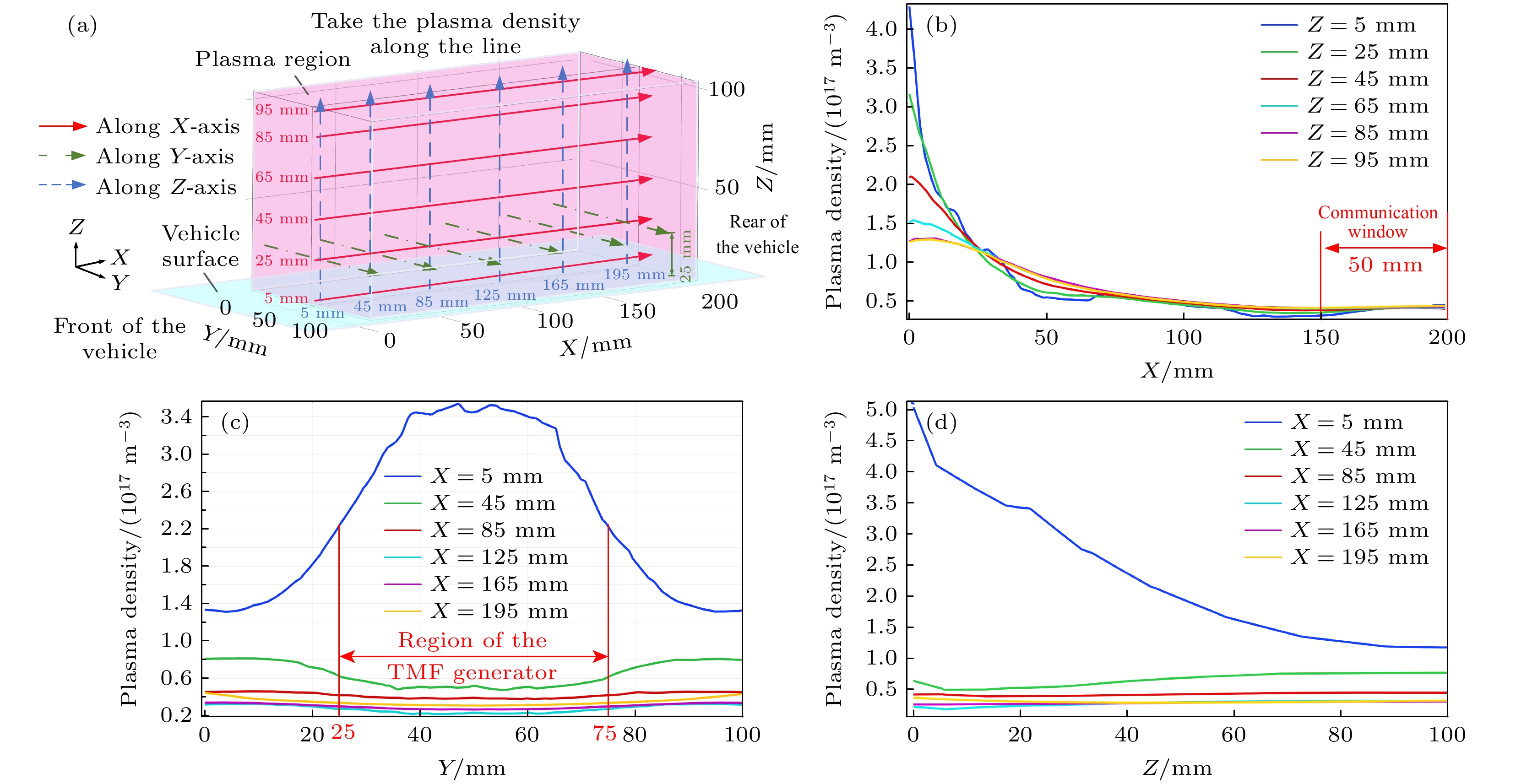

 下载:
下载:
